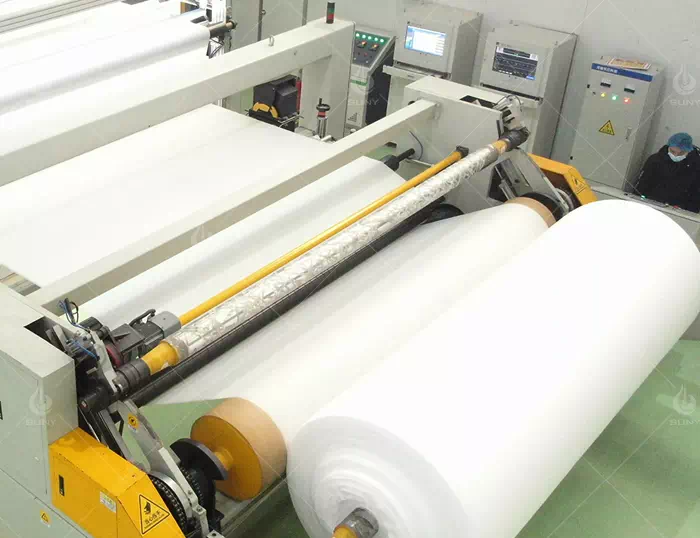Spunlace nonwoven fabric is commonly used in the production of wet wipes. It is a type of fabric made by entangling fibers together through mechanical, hydraulic, or pneumatic processes, rather than weaving or knitting. Spunlace fabrics are known for their softness, strength, and absorbency, making them ideal for applications such as wet wipes.
The production of spunlace nonwoven fabric involves several steps. First, fibers are opened and blended to create a homogeneous mixture. These fibers can be natural, synthetic, or a combination of both. Common fibers used in spunlace fabrics include viscose, polyester, cotton, and blends of these materials.

Next, the fiber mixture is fed into a carding machine, which aligns the fibers and forms a thin web. The web is then transferred to a bonding machine, where high-pressure water jets entangle the fibers, creating a cohesive fabric structure. The entanglement of fibers provides strength and stability to the fabric.
After the entanglement process, the fabric may undergo further treatments, such as drying and finishing, to enhance its properties. These treatments can include processes like heat setting, embossing, or applying chemical additives for functionalities like antibacterial properties or fragrance.
Spunlace nonwoven fabrics find extensive use in various industries, including hygiene products, medical applications, cleaning wipes, and filtration. Wet wipes, in particular, benefit from the softness, strength, and absorbency of spunlace fabrics, making them gentle on the skin while effectively cleaning or moisturizing.
It's worth noting that while spunlace nonwoven fabrics are widely used in wet wipes, there are other types of nonwoven fabrics as well, such as airlaid, needlepunch, and meltblown, each with its own manufacturing process and characteristics.
Email:ecosanequip@gmail.com
Add: Henan Communication Industry Area, Jingbei 3rd Road, Zhengzhou, Henan, China